
Introduction
A couple of years back, I wrote a six-part series entitled Five Evangelical Christs. My academic research is on the relationship between religion and contemporary art; so, of course, images of Christ are a natural part of that. I’ve become interested in how Jesus is represented in different faith traditions. I naturally started with my own tradition of evangelicalism. The Mormon perspective is the second in this project. This blog series is an adaptation of a paper I presented at the Mormon Scholars in the Humanities conference held at the LDS Institute and Graduate Theological Union in Berkeley, CA. In the future, I hope to examine other traditions as well. Who knows, maybe at some point I can develop this into a book.
The basic assumptions in this series are just as they were in the series on the evangelical Christ- a religion’s depictions of Jesus reflect how its people view Christ. It may be that the images help to form how people think, or it may be that the images are formed by those thoughts. Either way, we can learn about how Mormons think about Jesus by their images of Jesus.
As with the evangelical Jesus’, the images in this series are not about finding theological truth. They are about discovering how Mormon images of Jesus reflect Mormon thinking about Jesus.
Six Mormon Christs
Over the course of almost two hundred years, Mormonism has grown from a small idiosyncratic sect of Christianity to an established world religion. Along with the development of any culture, there is inevitably the development of an accompanying visual culture. This study focuses on images of Jesus within the Latter-Day Saint culture.
Fundamental to this project is the understanding that art is reflective of culture. There have long been discussions about whether art influences culture or culture influences art. Likely both are true. However, a causative relationship is not important for the purposes of this study. What is important is acknowledging that they are reflective of each other. There is little doubt that the artwork produced by a person or culture is a sort of visual philosophy which shows the artist’s or culture’s beliefs. On the other hand, artworks from other cultures can be appropriated into a culture for a variety of reasons including that something in that artwork resonates with preexistent beliefs. Once these ideas, visually expressed, join the cultural milieu they function to reinforce or, at times, challenge prevailing beliefs. Additionally, artwork that questions or evolves accepted beliefs can be produced from within a culture. What is of primary importance is to understand that the artwork in this study exists within the LDS culture and through its study tacit and explicit beliefs can be illumed.
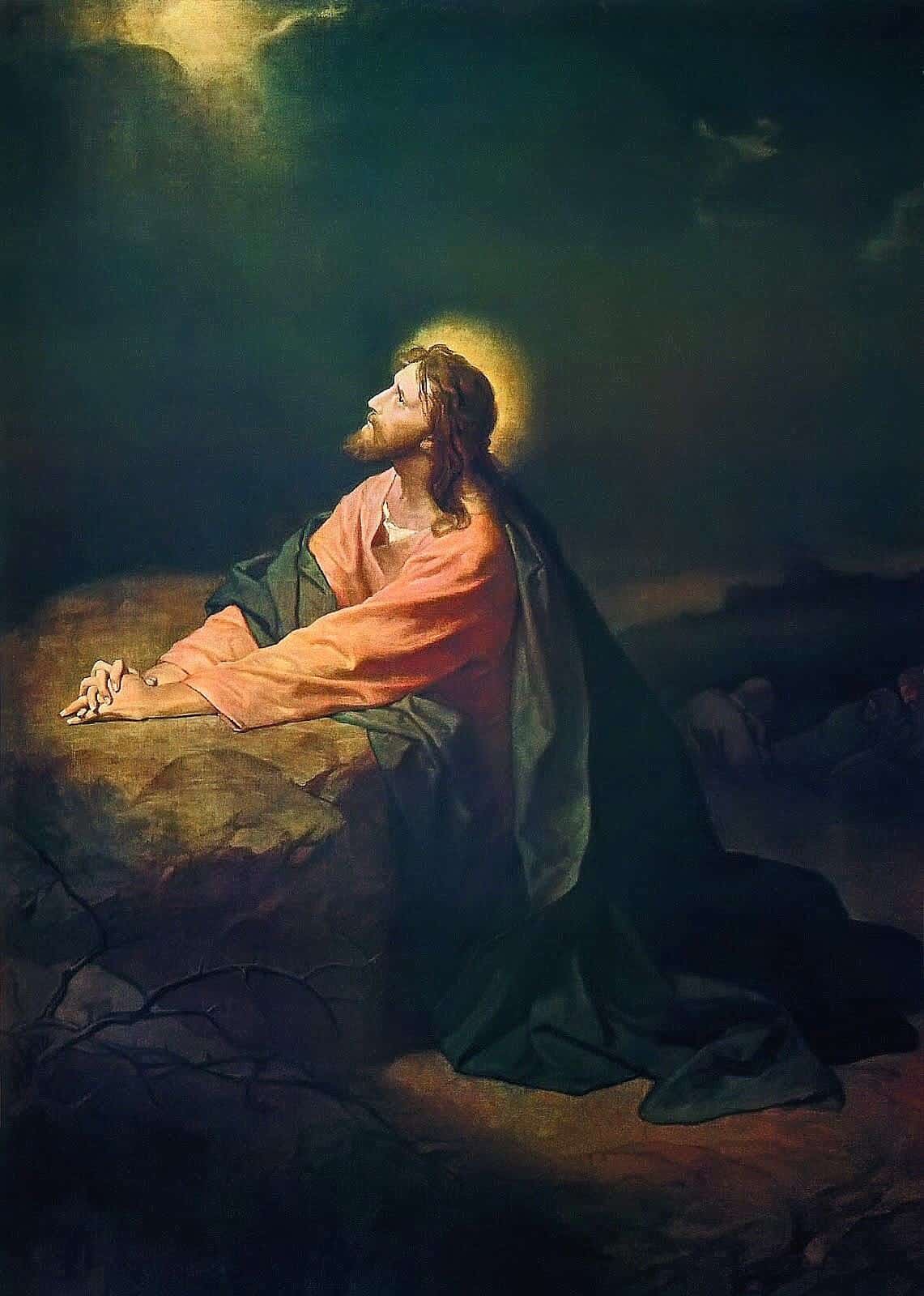
Jesus in the Garden of Gethsemane, 1890
There are few examples of the LDS’ use of images of Christ during the church’s frontier years of the nineteenth century. This study, however, is not a historical survey. Noel Carmack’s article “Images of Christ in Latter-day Saint Visual Culture, 1900-1999” provides an excellent historical survey.[1] Of issue here is how images of Christ are either form or are formed by LDS conceptions of Jesus for those members who are living today.
Mormonism grew out of a protestant religious tradition that would develop into contemporary evangelicalism. As such, there is a shared cultural heritage and a similarity in ethos. However, one of the hallmarks of contemporary evangelicalism is syncretism and the tensions that arise as adherents move somewhat fluidly between churches that share the evangelical ethos but not all the doctrinal distinctives. The decentralized structure of evangelicalism and the increasingly fluid denominational lines create evangelical conceptions of Christ which are at times in tension if not fully contradictory. Mormonism, by contrast, with living prophets and a strong central church structure faces different challenges when it comes to visualizing Christ. Noted Mormon artist James Christensen recalls, “When I was growing up, I was taught that we should not have pictures and statues of Christ in our homes or meetinghouses. Nothing was to come between us and the individual image each of us had of the Lord we worshipped.” However, images were used in church literature and, in the 1950’s, the Church took an active role in forming the visual culture of their faithful.
This study will examine six Mormon conceptions of Christ: one provided by appropriated European art, one by commissioned illustrative art, and four by contemporary Mormon artists.
The Europeans
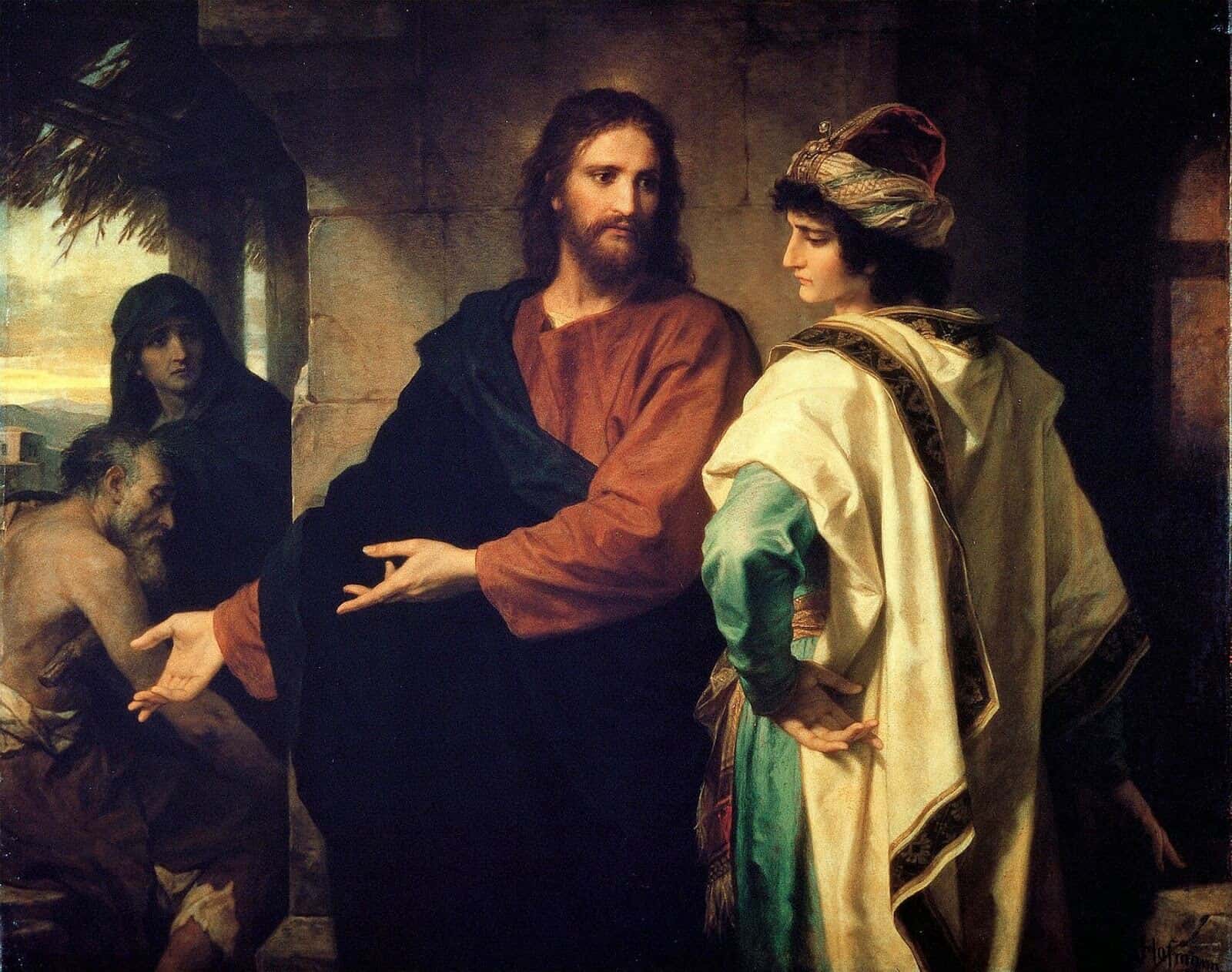
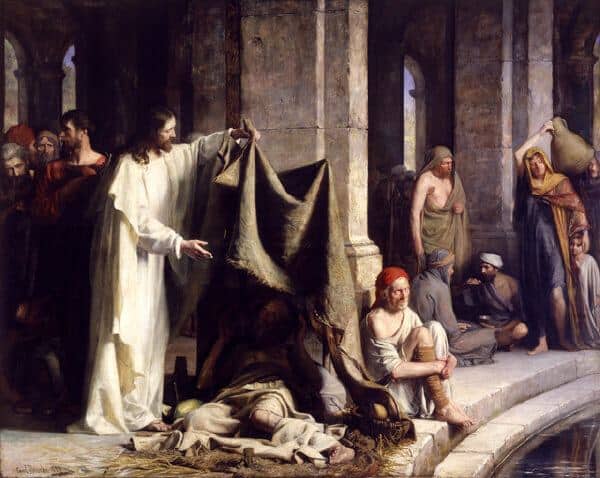
Noel Carmack argues that early images used in church publications were influenced by several factors. One important factor is the Biblical literalism which dominates LDS theology. Especially early in the twentieth century, this was in contrast with the increasing influence of higher criticism in religious scholarship. As a result, the church focused on depictions of Jesus that were naturalistic and reinforced the corporeal nature of Jesus’ existence. Northern European realist artists such as Heinrich Hofmann provided the desired naturalism without problematic non-material elements such as halos or clear references to the Catholic Church. Additionally, these northern images embraced the narrative tradition of Christian art rather than the iconic tradition more prevalent in Catholic and Orthodox works; therefore, these works reinforce the literal existence of Jesus and not just his theological significance.
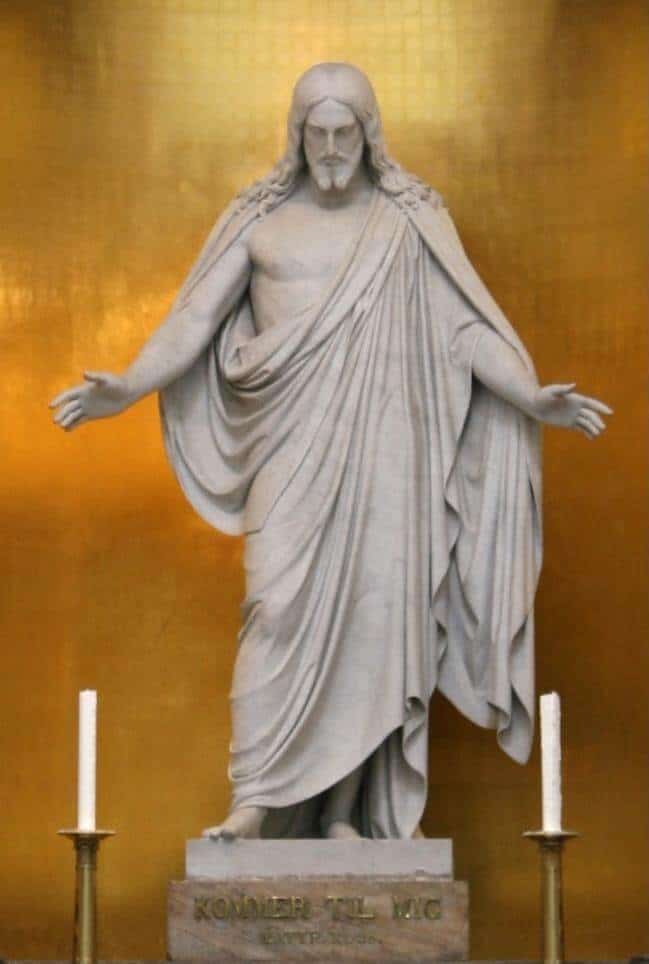
In the 1950s, the church turned to neo-classical works which were even more focused on the material reality of the figures depicted. Between 1956 and 1958, Doyle L. Green managing editor of the church owned Improvement Era publications serialized a set of readings with images by nineteenth century painter Carl Bloch which were published by Deseret Books in the book He That Liveth in 1958. Green said in praise of Bloch’s work, “the skillful use of color, give a highly realistic, quality to his paintings. His buildings, trees and shrubs, clothing, general terrain, and even walls and rocks create a remarkably accurate impression of the Holy Land.” It was, as much as anything, the connection to the historicity of Jesus that Green admired.
Among the most iconic images of Jesus in LDS culture is Christus by Bertel Thorvaldsen. The original is located in the Church of Our Lady in Denmark but in 1966 an eleven foot replica was installed in Temple Square in Salt Lake City. There are today fourteen replicas in three nations at official LDS sites, mostly visitor centers. As a sculpture this piece, perhaps most literally, reinforces the physicality of Christ. Additionally, all these European works, but in particular the Christus and the work of Bloch, reinforce the association of Jesus with the LDS ideal of masculinity, which at mid-century was largely physical. In describing an 1877 vision Elder Orsen F. Whitney claimed that his vision of Jesus was “noble of stature and majestic mien—not at all the weak, effeminate being that some painters have portrayed.” The Christus in particular reinforces this vision of Christ for the hundreds of thousands, if not millions, of people who see one of the LDS replicas each year.
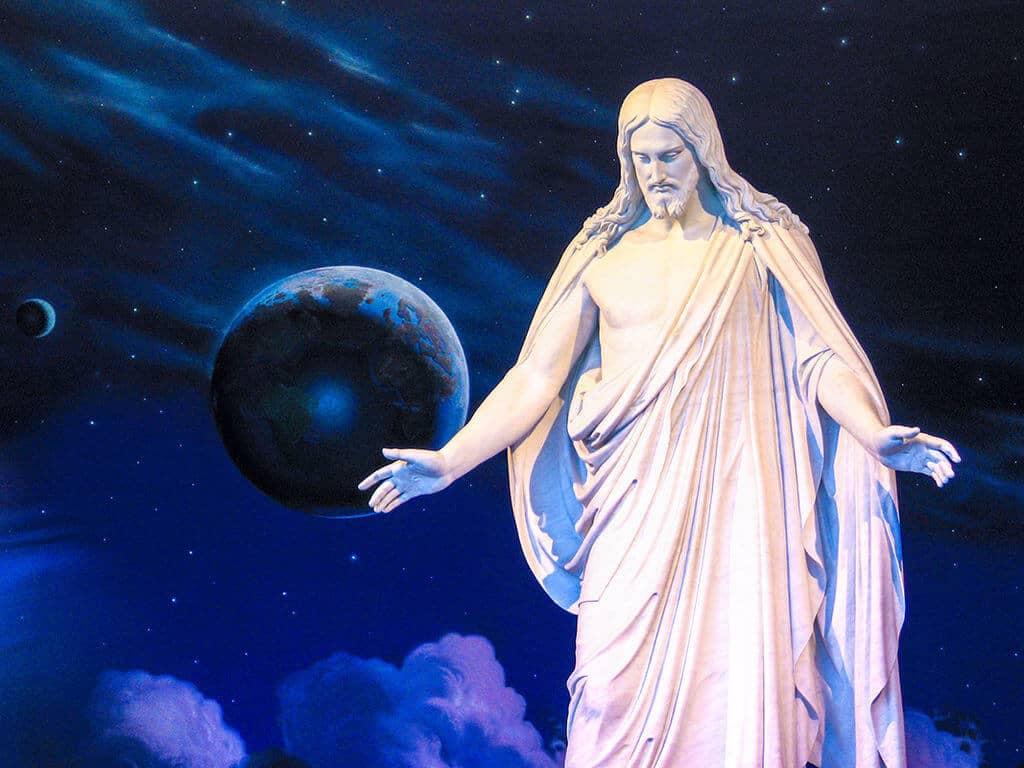
The Illustrators
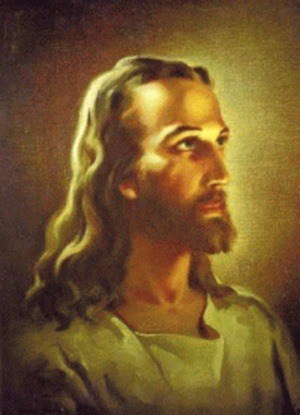
A few years before Mormon leaders first brought the Christus to Salt Lake City protestant artist Warner Sallman, in his famous painting Head of Christ, dealt with concerns similar to those expressed by Elder Orsen F. Whitney. The modernist-fundamentalist controversy severely disrupted the religious life of conservative protestants. The effeminate Jesus’ of the Victorian era, which Whitney had decried the previous century, also bothered evangelicals. While taking a course at Moody Institute Sallman was told by a teacher “I hope sometime you [will] give us your conception of Christ. Most of the pictures I have seen are too effeminate. I hope you’ll picture a virile, manly Christ!” This virile Christ, to some seems far less masculine than Sallman intended. However, the image struck a chord with many people and became the most reproduced image of Christ with an estimated 500 million reproductions. The image was compelling for Mormons who identified both with the manliness for which Sallman strove and with what they saw as a “universally appealing attitude of supplication.” Mormon’s over time developed the concept of “consecrated manliness” where the physical perfection was less central than the development of sensitivity, goodness, and virtue. Sallman’s Head of Christ was widely used in LDS circles and could be found displayed in homes, ward meeting houses, and libraries.
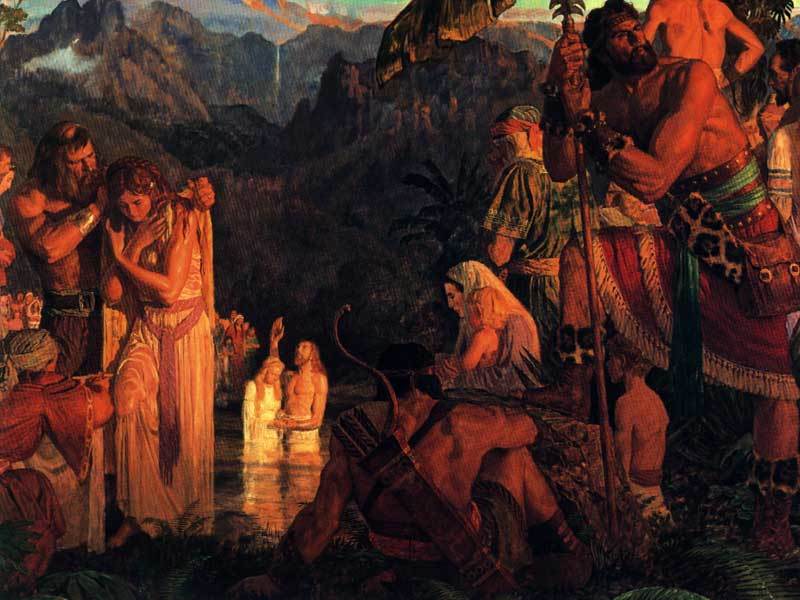
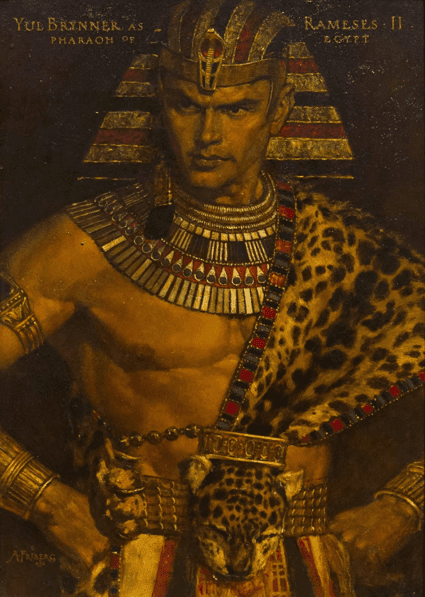
Mormon sculptor Avard Fairbanks argued that “it is going to take ‘Mormon’ artists to give the feeling and proper interpretation to ‘Mormon’ subjects.” The second half of the twentieth century saw an explosion of works by Mormon artists. One of the most influential for LDS conceptions of Christ was Arnold Friberg. In 1961, the editors of Improvement Era introduced the Gospel in Art series which provided members the opportunity to obtain framable reproductions of the work of Friberg. A cycle of paintings on the Book of Mormon which were published in the Friend eventually caught the eye of Cecil B. DeMille and Friburg was hired to be the chief artist for the film The Ten Commandments. After his work in Hollywood was done he returned to Utah. However, the open tunic of Jesus in Friberg’s The Risen Lord caused a rift with LDS leadership and he no longer painted images of Jesus for the church.
The church then reached out to Harry Anderson to take up the mantle of making illustrations for the church. From 1971-1985, 41 percent of images of Christ published in Ensign were by Harry Anderson.
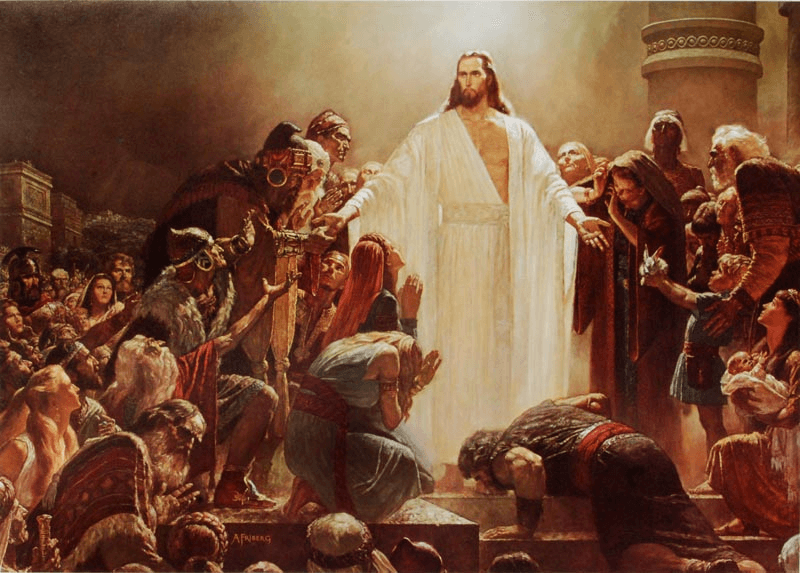


His vision of Christ as a “compassionate ministering servant” shaped the modern LDS conception of Christ. His more emotive style fit more naturally with the LDS concept of consecrated manliness than did the harsher classicism of Friberg. In 1971, Ensign also revitalized the Gospel in Art program attempting to bring images of Christ into Mormon homes to help inspire and re-enforce their piety. Anderson, however, was a devout Seventh Day Adventist. As such, while he was happy to make Biblical paintings for the church he was not willing to make paintings depicting scenes from the book of Mormon. For these images, he recommended his longtime friend Tom Lovell.
Anderson’s The Second Coming is one of the most iconic religious paintings in the late twentieth century. Not only is it ubiquitous in LDS circles but it is widely recognized among both Protestants and Catholics, for better or worse (Note the Tim Tebow as savior version) The image does, however, effectively express the churches theological convictions about what it means to be a man and show the affection of Jesus for the viewer. Christ’s arms are spread ready to embrace the viewer. His majesty is declared by the legion of wingless angels but he is not aloof on a throne. He walks down the hill of clouds to the viewer ready to embrace his brother or sister and welcome them home.


The four contemporary LDS artists I will look at are Del Parson, Trevor Southey, J. Kirk Richards, and John McNaughton. Parson like the illustrators of the previous generation produces work that is largely doctrinal and devotional. Southey produces fine art that pushes at the boundaries of LDS orthodoxy and expresses the tensions that some Mormons feel in their faith community. Richards similarly produces fine art but does so more comfortably located within the mainstream of LDS culture. Finally, McNaughton produces work that is ideological and polemical.
Del Parson
The Lord Jesus Christ is the most reproduced Mormon image of Christ. In many ways, it is the Mormon interpretation of Warner Sallman’s project from 1940. The three-quarter view of Sallman has been updated so that Jesus looks directly at the viewer. His features are rugged and more distinctly masculine than in Sallman’s painting but there is still a warmth in his eyes. He simultaneously provides a sense of authority and an emotional connection for the viewer. There is nothing in this painting that challenges the faith of the viewer. It is entirely faith-affirming and in concert with the Church’s teachings about Jesus.
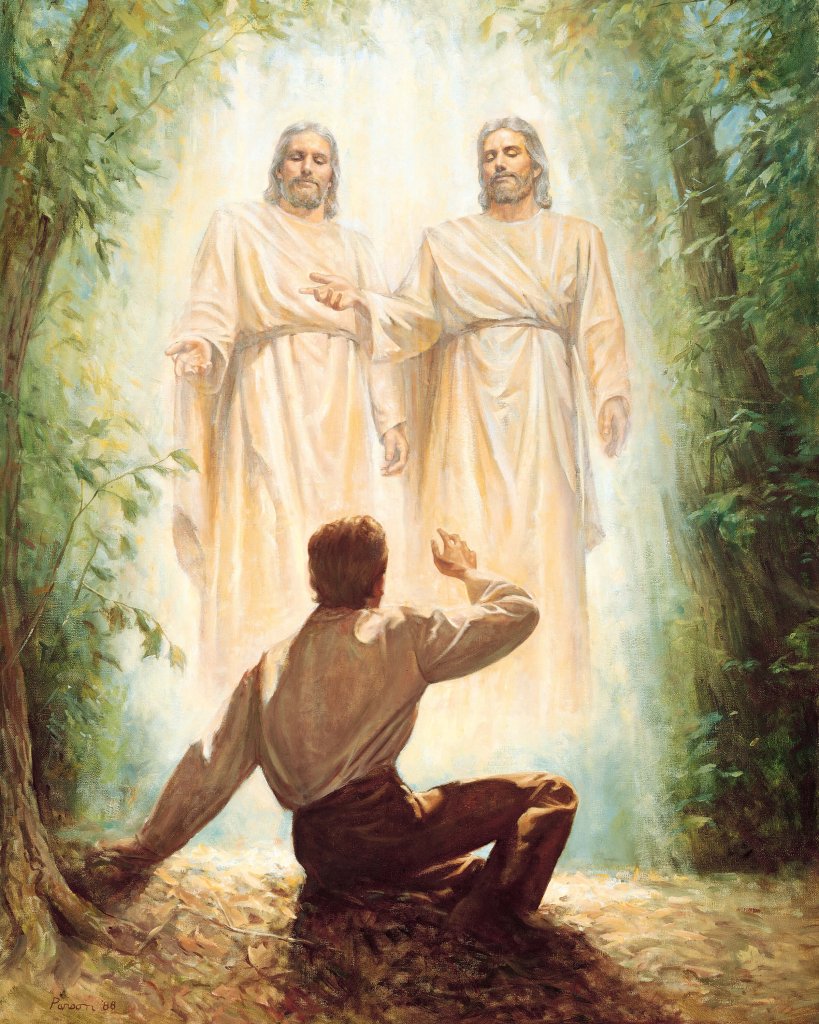
Similarly, in The First Vision Parson’s illustrated the church’s teaching about Joseph Smith’s first encounter with God. The painting shows both the Father and the Son as two distinct personages consistent with the First Vision account. This underscores the ontological differences between Jesus as understood by Mormonism and Jesus as understood by Protestant, Catholic, and Orthodox traditions. For the LDS viewer, this connects the ontology of Christ and by extension his role in the Plan of Salvation to the very beginning of the Restoration. Jesus and the Father are depicted very similar to the depiction in Parson’s painting The Lord Jesus Christ. The painting emotes both the power and love of the Godhead. It is faith-affirming and faith-building. It is art in the service of doctrine.
To learn more about Del Parson visit his website.
Kirk Richards


The work of Kirk Richards seeks to integrate the traditions of contemporary art, historic Christian icons, and LDS religious imagery. All the images of Jesus examined thus far have had similar features. This in and of itself is problematic. There are no scriptural descriptions of Jesus and James Christensen points out that descriptions from modern revelation tend to be indistinct. “The descriptions [of Jesus] are always in such terms as light, gold, and shining.” He conjectures, “I think…that visions show Him in so much light and energy that a person simply cannot see structural details.” Still he argues that “any artist who paints the Savior just needs to build an acceptable generic icon. A picture of the Savior without the beard and a different hairstyle would not be recognized as the Savior. We identify him by certain traditional traits”. Mormons typically rely on reports that Joseph Smith said that Jesus was light complexioned with blue eyes and Book of Mormon assertion that Mary was “exceedingly fair and white” (1 Ne. 11:13) as the few clues available. Richard Oman, Senior Curator at the Historical Department of The Church of Jesus Christ of Latter-day Saints, further cautions, “If we move into abstraction, we have the potential of sliding down the slippery slope to disembodying God- to removing him from historical context and from the tangible, physical body that he acquired here on earth.”

Yet, this is exactly what Richards does in his work. On his blog Richards laments three requirements for Temple art: 1) No abstraction, 2) Christ cannot be in shadow, and 3) Tension must be resolved. Richards’ work, while not in a temple, violates all three of these admonitions. He does not, however, push at the boundaries out of disrespect. He is a faithful Mormon who argues, “According to Mormon teachings, our spiritual journey is one of experience, opposition, and learning. Indeed, if we’re meant to grapple with problems of eternal and universal scope and learn to be as God is, why would we want to reduce everything to a nice, happy, light package?” For Richard’s the tension, the lack of resolve, the ambiguity are the very point. They provide the viewer with content that can engage the grappling. For Richards, and his growing audience, the unanswered questions in his art, and by extension life, are the point. They allow for one to seek the answers rather than to simply have them tritely delivered.
To learn more about Kirk Richards visit his website.

Trevor Southey

Trevor Southey is a controversial art figure. Steeped in the intellectual high arts he found the paintings of Harry Anderson representing the Mormon Church at the 1964 New York World Fair embarrassing. He taught art at BYU and was a crucial figure in the development of serious art in Utah. But he is gay and in 2010 was excommunicated. His powerful works do not resolve the tensions. They live in the tension. It is the tension that gives them power, vitality. Despite being a gay man, Southey married and had Children in an attempt to fit into LDS culture. The marriage ended in divorce. Southey claims that “being gay in [Mormon] culture is beyond hell.” He lived in constant internal tension. The Christ in his work reflects this tension. The resurrected Christ still bears the marks of the crucifixion. His expression and that of Mary are not expressions of hope and joy. The hope that should abound at this point in the narrative is subsumed into greater angst. The mood reflects his personal torment and foretells the rupture of divorce that will come to Southey’s personal life the following year despite the Edenic life he had built.
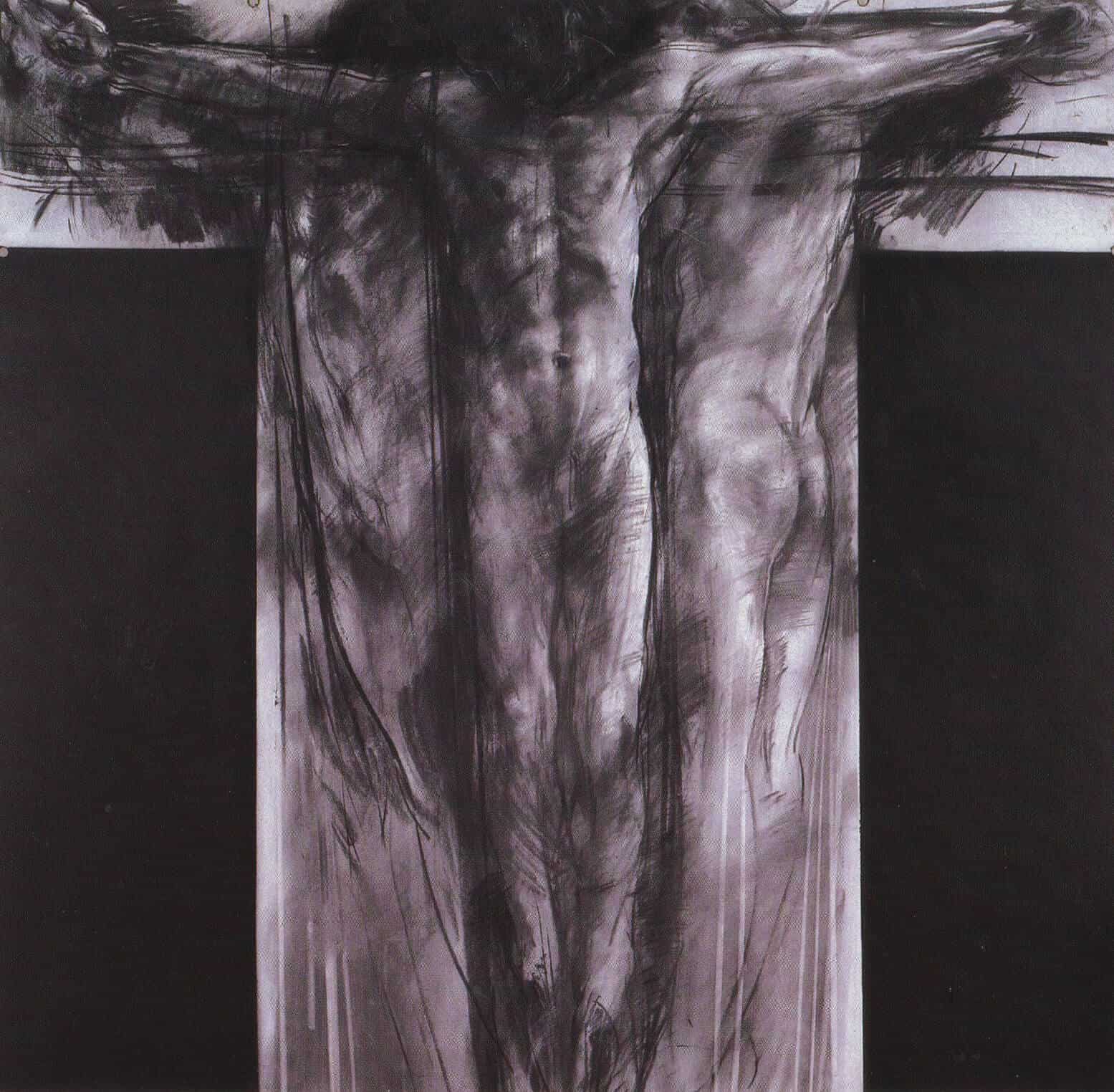
Crucifixion paintings from a few years previous are evocative of x-rays as if trying to delve past the superficial aspects of the story to find the deeper meaning or perhaps conversely to expose his own inner turmoil despite the ideal surface of his life. This tension in Southey’s work while idiosyncratic of his situation also identifies with larger trends within the Mormon Church. There is an undeniable disenfranchisement of some—even of some who desire faith which is reflected in his work.
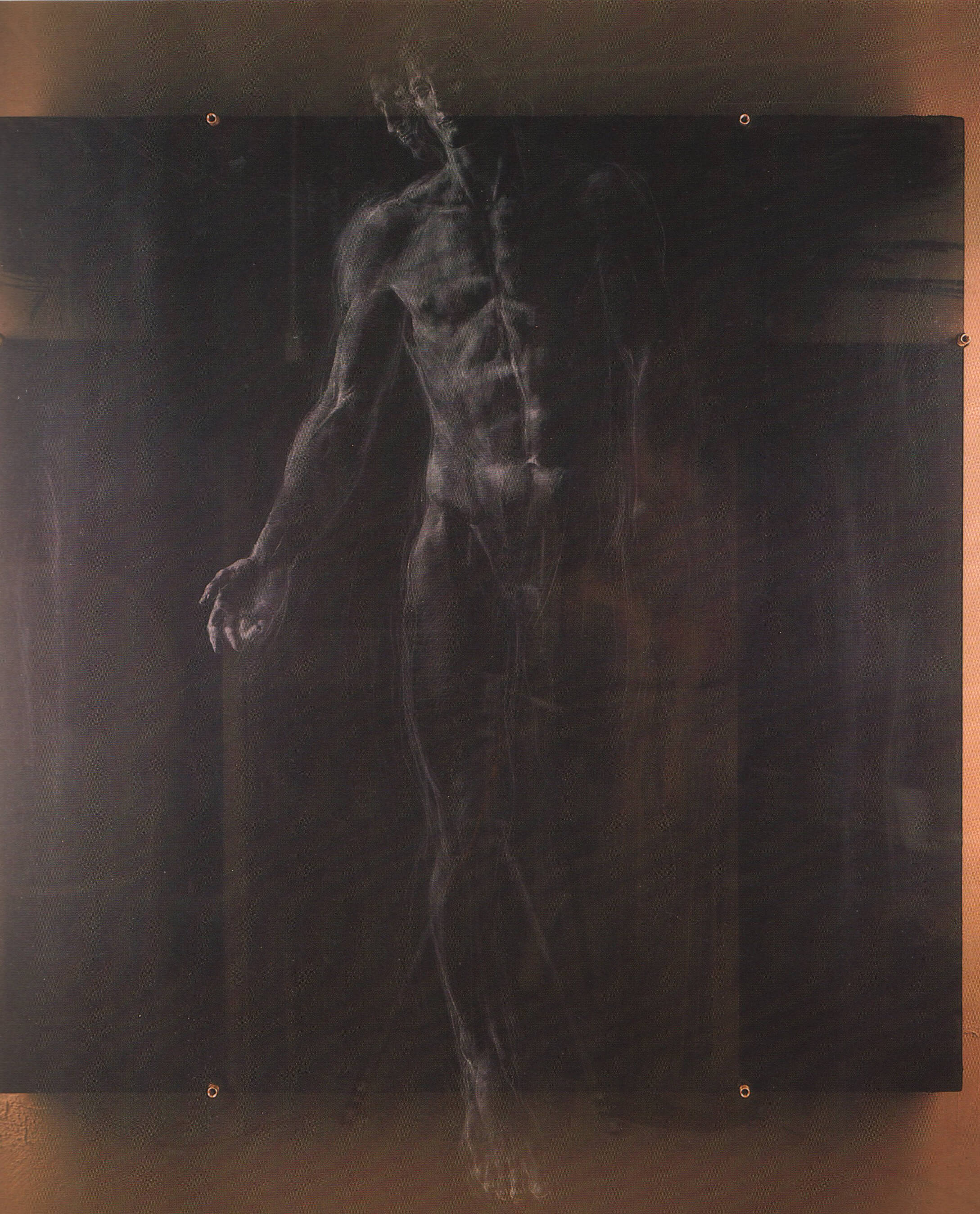
John McNaughton



Religion and politics make strange yet frequent bed fellows. John McNaughton’s work is highly polemical. For him, the issues are obvious and the answers are simple. This nation was founded and is preserved by God and conservatism. The problems in our nation are the fault of liberalism and socialism. Liberalism has no virtue and plagues the very core of the nation. Obama the great socialist devil has forgotten the people and he plays the fiddle while the nation burns in a fire he set.
While for many this sort of rhetoric is distasteful, there is a large constituency with which it strikes a powerful chord. In 2011, the BYU bookstore stopped selling McNaughton’s One Nation Under God despite its robust sales.

Some accuse, McNaughton of painting hate but there is clearly an audience for his work, an audience which is, at least in part, Mormon. His conservatism and distress about the direction of the country resonates with a number of Mormons.

Conclusion
The gentle, loving Christ depicted in Mormon art has been nurtured by the Church for over half a century and his consecrated manliness visually preached to the faithful. Through the works of nineteenth-century Europeans and hired illustrators, both Mormon and not, the church has encourages a visual image of Christ all the way to the famous doctrinally sound and faith affirming work of Del Parsons. But, there is also pain, fear, hatred, prejudice, and mystery in Mormonism. There is doubt and passion, spiritual and worldly. All these things to reflect in Mormon conceptions of Christ.
This entire series has been an adaptation from a paper I delivered at the Mormon Scholars in the Humanities conference in Berkeley California. The lecture and power point can be located on my academia.edu page.

Looking forard to reading the series